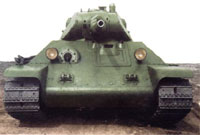Russia to assign 201 billion rubles to reform national defense complex
One of the results of the regular meeting of the Military-Industrial Commission (MICom) that took place on March, 14 is that the government determined how much money it needs from the sources other than the state budget and how it will get this money. According to the chairman of the MICom and the First Vice-Premier Sergey Ivanov the program of reforming Russian military-industrial complex will get 201 billion rubles from non-budget sources. This sum makes 40% from all investments in the federal target program (FCP) «Reforming military-industrial complex».

MIC companies will invest this money themselves as “target deductions from the profits”. Additionally they are supposed the redirect part of the export profits on modernization of the technologies and performance of the national state defense order. Simultaneously Ivanov promised to strengthen the measures of state support to the branch, including the system of state guarantees. It concerns first of all crediting of loans taken for diversification and modernization the military enterprises as well as on creation of the competitive products for foreign and home market.
The main goal of this FCP is creating the production capacities for successful implementing the State Arms Program (SAP) of 2007 - 2015 as well as ensuring the planned volume of military export. Today it is difficult to name precisely what means “development and introduction of critical and basic technologies on the basis of which hi-tech samples of arms and military hardware” will be created.
One of the key points of the SAP is extending the leasing systems in the MIC, also extending the system of orders for civil needs, including within the frameworks of the so called national projects. (First of all it assumes medical equipment). According to Sergey Ivanov in just 2-3 years the companies will be able to get first tangible revenues from the serial manufacturing under the SAP. Noteworthy, MICom for the first time discussed the structure of the defense order for three years ahead - 2008 - 2010. The First Vice-Premier and the head of the MICom drew attention to the fact that the President of the nation considers SAP as a program of national priority. The specialists developing draft state budgets will be recommended to include the three-years financing of SAP into the national three-year budget of the country.
Information for those who enjoy skepticism: today it is clear that serious private investments in the military sector (where the sales are completely controlled by the state) are possible only if the administrative methods are used. Now Russian MIC has several hundreds enterprises. (More precisely: 1355 total number of enterprises registered in the State Register, of which 991 military ( of which 215 accountable to the MOD, 53 to the Nuclear Agency and 96 to other agencies working with the defense order)). They can be roughly divided into three equal groups according to the principle of ownership. First is FGUPs (state unitary enterprises), then JSCs with the controlling interest of the state and finally the enterprises with mainly private ownership. It means that about 60% of the “purpose oriented deductions from the companies” is de facto the state money.
«Such a problem really exists», agrees the director of the Center for Analysis of Strategies and Technologies (an authoritative military analytical agency) Ruslan Pukhov. According to him it is senseless to count on investors-volunteers who have no relation to the MIC. "It is possible to bring the full-fledged private investors into the MIC only by administrative measures, by an order. Who will get involved in a project which does not guarantee pay off in the foreseeable future?"
However, there is no enough ground for the sceptics to remain happy. It is wide spread opinion among the top managers of different companies that today the state learned how to use the administrative measures efficiently. In this or that way the state allows reaches the target set. Is it worthwhile naming the notorious examples?
Meanwhile the structure of the defense industry is in the beginning of a significant change. The next day after the meeting of the MICom Moscow based aviation engine maker Salyut hosted the all-Russia conference on the problems of developing MIC. It gathered the representatives of the defense enterprises, deputies of the State Duma, members of Federation Council and the government. According to the head of Federal A gency on I ndustry Boris Aleshin after unifications of the large enterprises, so-called "finishers", the enterprises of Russia will undergo the second stage of integration - in avionics, engine building and on a lot of other directions. This environment will have competition aimed at providing a competitive offer for the "finishers". This is a full stop in the discussion how many holdings there will be in the industries supplying parts of the finished goods. The government is about to start a large scale process of converting FGUPs (state unitary enterprises) into JSCs.
"FGUP is a totally outdated form, we need to create more efficient system of management and control", said the head of Rosprom. He stressed that creating JSCs is not a goal in itself. "Our purpose is creating a modern structure of management, a modern model of management, adequate to the actions of our competitors". The Russian government believes that the joint-stock companies "create more opportunities for more flexible management, for using the means of shareholders". According to this source since 2006 the defense enterprises of Russia will annually receive from the budget up to RUB 30 billion which are specially allocated on developing the machine-building branch.
This is a lot of money, but not as much as is needed. 140 billion rubles a year is required for the technological re-equipment of the enterprises of Russian MIC. According to the President of the League of Assistance to the Defensive Enterprises Alexander Brindikov the situation with the investments in the MIC is far from good.
In 2006 the federal budget covered 20,2% of the costs of technological upgrade in the MIC. Own means of the enterprises amounted to 74,8%, attracted means – 5%. According to the forecasts of the League by 2010 defense enterprises count to finance technological upgrade in the following proportion: 29,9% - state budget, 46,7% - own and 23,4% - attracted. Not only privileged industries, like shipbuilding, but all others working with the military orders seek the same assistance from the state: subsidizing the payment of banks’ interest, state guarantees for the credits, lower profit tax if the profit is spent on technological upgrade.
Yuri Seleznyov
Pravda.ru
Subscribe to Pravda.Ru Telegram channel, Facebook, RSS!




